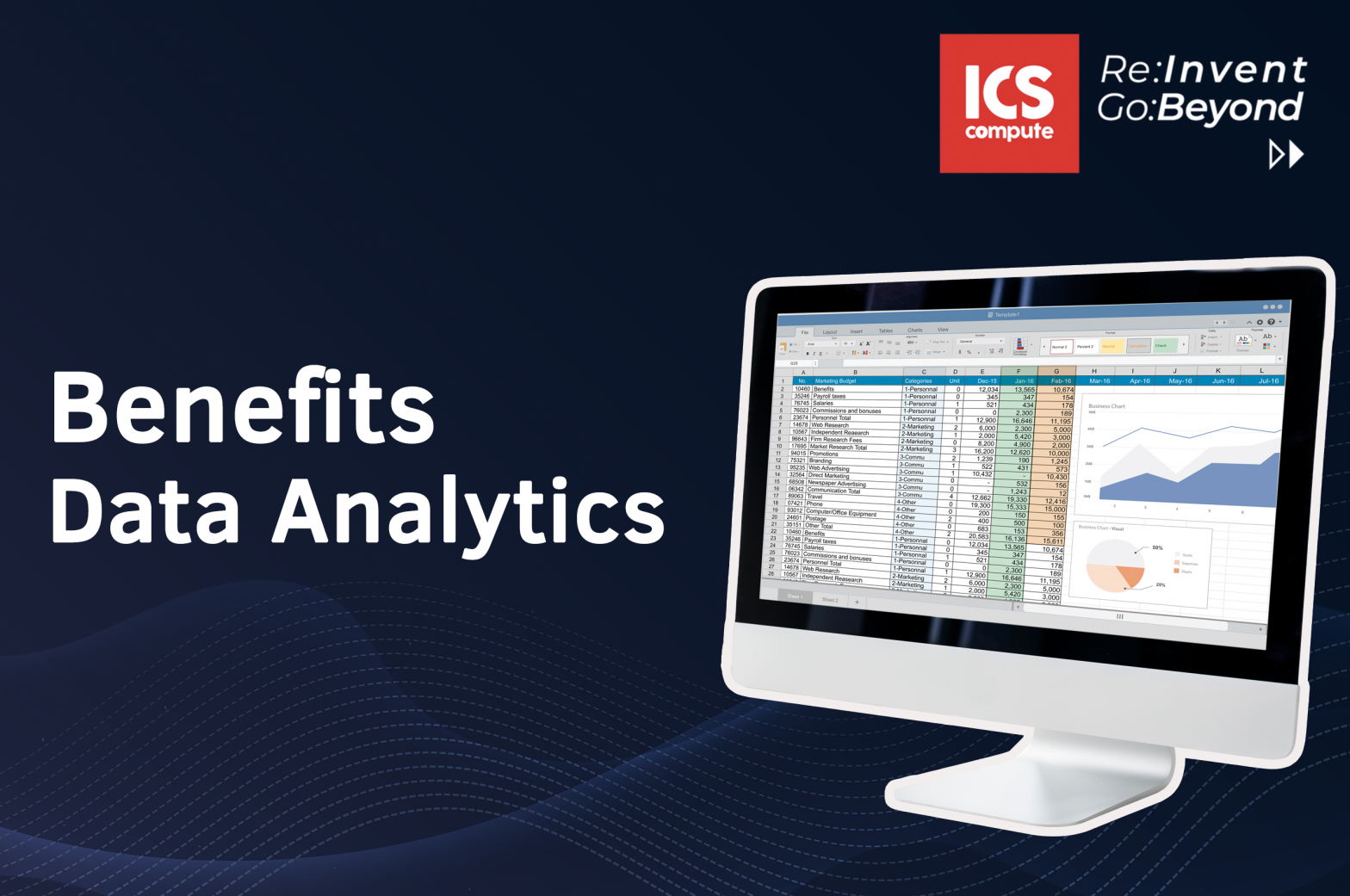What are the benefits of data analytics for your business

The rich data generated by companies contains valuable knowledge, and data analysis is a way to open it up. Data analytics can help an organization customize a specific customer’s market presentation to identify and mitigate business risks.
The global analytics market will grow from $ 10.5 billion in 2021 to $ 28.1 billion in 2026, with a compound annual growth rate (CAGR) of 21.7% on average.
Various factors, such as the increasing use of AI and machine learning and the acquisition and promotion of new products in this market, are expected to stimulate the adoption of specialized software and services. Big data, artificial intelligence (AI), Internet of Things (IoT), and machine learning (ML) are being introduced. Organizations now have access to specialized tools that can address a wide range of challenges:
1. Better Decision-Making
One of the key benefits of extensive data analysis is better decision-making in the long term. Instead of relying solely on knowledge, companies are increasingly looking at data before deciding.
One of the key benefits of extensive data analysis is better decision-making in the long term. Instead of relying solely on knowledge, companies are increasingly looking at data before deciding.
Collecting data in real-time and analyzing historical data enables businesses to create predictive models and get ahead of the curve.
When big data is combined with artificial intelligence, machine learning, and data analytics, companies are better equipped to capture accurate data.
For example, eCommerce variable pricing can help brands mention the price for different variables of the same product to make a purchase decision faster.
You use what you have accumulated over the years and use technology to quickly make decisions without example or error.
Another important use is AI classification tools for classification, such as cat identification versus suspect identification and guidance.
2. Personalize The Customer Experience
Companies collect sales data from various channels, including physical purchases, e-commerce, and social media.
Companies can gain information on customer behavior by creating detailed customer information from these data to provide a unique experience.
Shop at a clothing store that has physical and online services. A company can analyze its sales data and the data from its advertising pages and then create advertising campaigns to promote its electronic sales in product segments that customers have long been interested in.
Organizations can conduct behavioral analysis of customer data to improve customer service. For example, a company can use an information model for e-commerce transactions to determine which products can be recommended at checkout to increase sales.
3. Retention And Loyalty
Studies have shown that data-driven marketing (e.g. social media marketing, email marketing, and behavioral analysis) can increase sales and customer loyalty.
Social media, online research, ethical analysis, and market research work together to help brands understand what people want from them.
One of the most effective methods of doing this is to conduct market research surveys to develop this understanding.
4. Identification of Potential Risks
Companies today thrive in high-risk environments, but those environments require critical risk processes, and extensive data has contributed to developing new risk management solutions.
Big data can improve the effectiveness of essential simulations to predict future risk and make better planning.
5. Increase the Efficiency of Work
It can be helpful to analyze large data sets quickly and present it in a structured way to help achieve your organization’s goals. It promotes a culture of efficiency and teamwork by allowing managers to share detailed information with employees.
Opportunities and improvements within the company are reflected, and actions can increase work efficiency and productivity.
6. Streamline Operations
Organizations can use data mining to satisfy their needs. Collection and analysis of supply data can identify the reasons for production delays or question marks and help determine which four problems may arise in the future.
If the forecast shows that a particular vendor will not handle the required volume during the holiday season, the company may supplement or replace that vendor to avoid production delays.
In addition, many companies, especially in the retail sector, are struggling to meet their record standards. Analyzing the data can help determine the best offer for all the company’s products based on factors such as season, holidays, and weather conditions.
7. Delivering Relevant Products
Products are the blood of every organization and often the most significant investment companies. The role of the product management team is to identify trends that drive strategic innovation, action plans for new functions and services.
Good communication between other groups, where people express their ideas and opinions through research, helps companies stay competitive. Especially when customer needs change or new technologies are developed. It also makes it easier to see what the market needs to deliver a product before ordering.
8. Accurate Measure of Campaign ROI
Attribution has been a big problem in the market for a long time. Advanced analytics tools help you measure the impact of any advertising, communication, and tactics that increase customer engagement.
This knowledge provides organizations with a foundation for future planning: what methods, events, and content were more (or less) practical? This overview will also help companies better understand budget decisions.
For example, running an event survey before, during, and after an event will give you all the data you need to decide whether it’s worth repeating.
9. Track Customer Behavioral Changes
In today’s world, consumers have a lot to choose from. If organizations do not pay attention to consumer needs and expectations, they will soon find themselves in a downward spiral. Consumers often change their minds as they face new information in this digital age.
Because of the large amount of customer data, it is almost impossible for organizations to understand all changes in customer data without using analytics.
Analytics gives you information about what your market thinks and whether there have been any changes. Therefore, responding to changes in customer behavior can provide an essential opportunity for companies to react more quickly to market changes.
Of course, there are a few methods you can employ to keep your customers happy and loyal to your brand in the meantime.
10. Complex Supplier Networks
By using big data, companies provide community sales or B2B links with greater accuracy and control. Service providers can avoid the pitfalls they often face by using large amounts of data.
By leveraging big data, consumers achieve the high level of technical intelligence required for their success.
Supply chain administrators now see this as a technological breakthrough, changing the foundation of the retail network to the four highest levels. This communication allows Internet users to apply new knowledge to existing problems or other perspectives.

